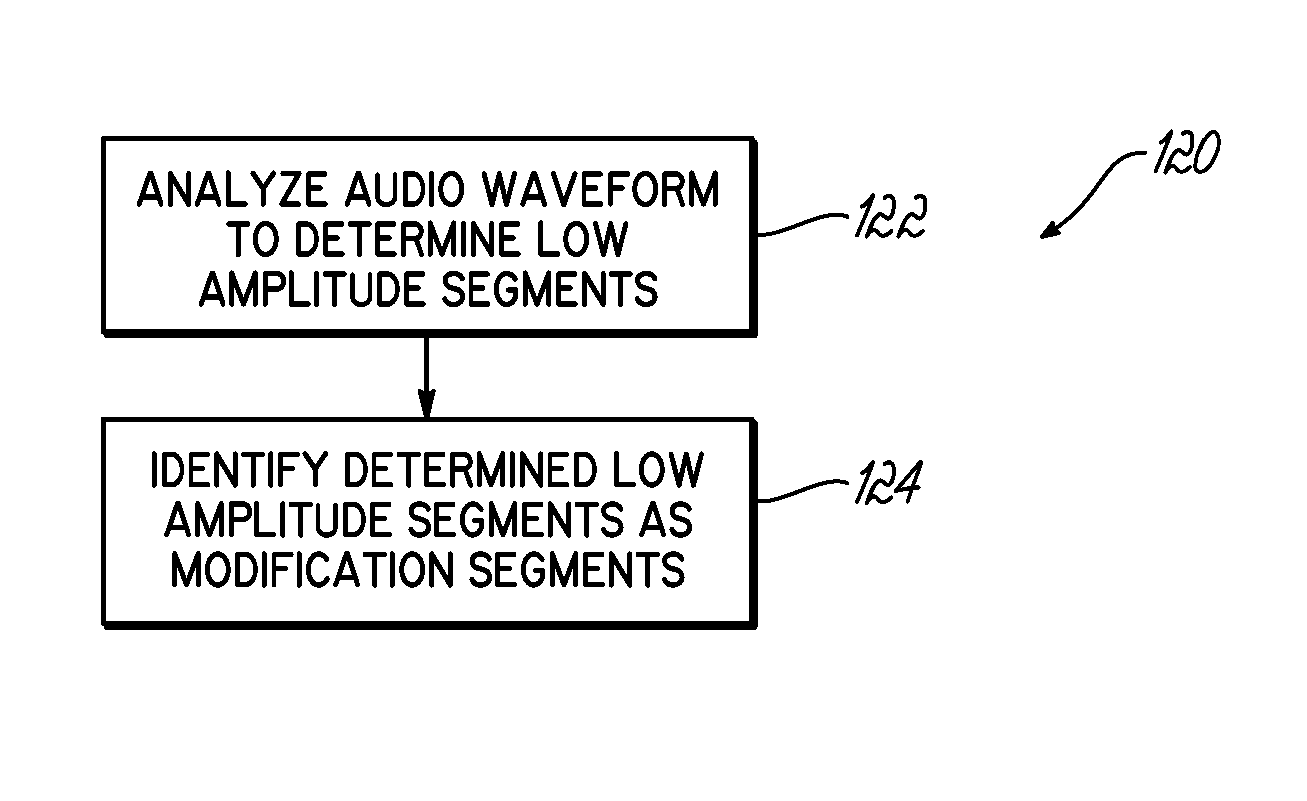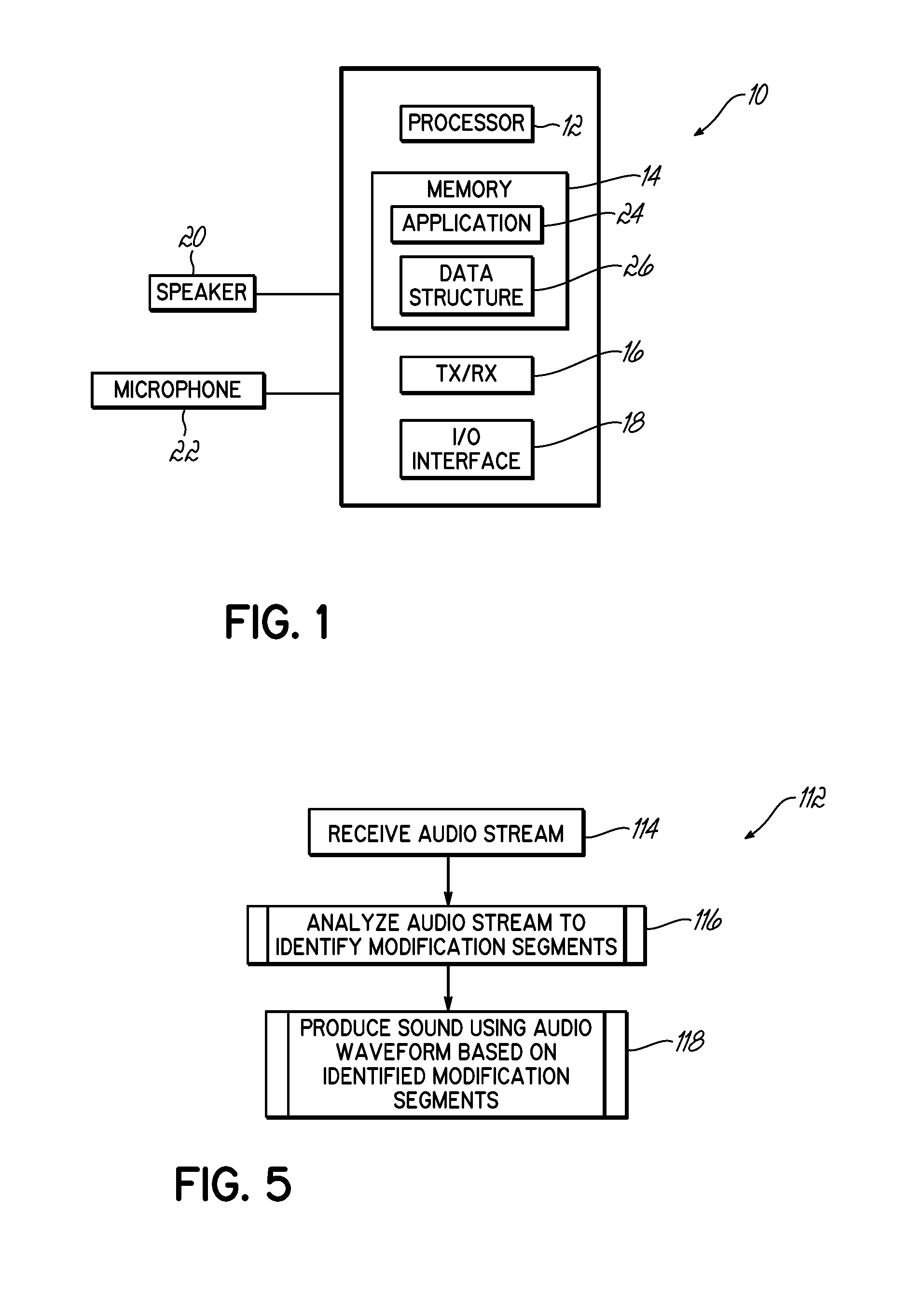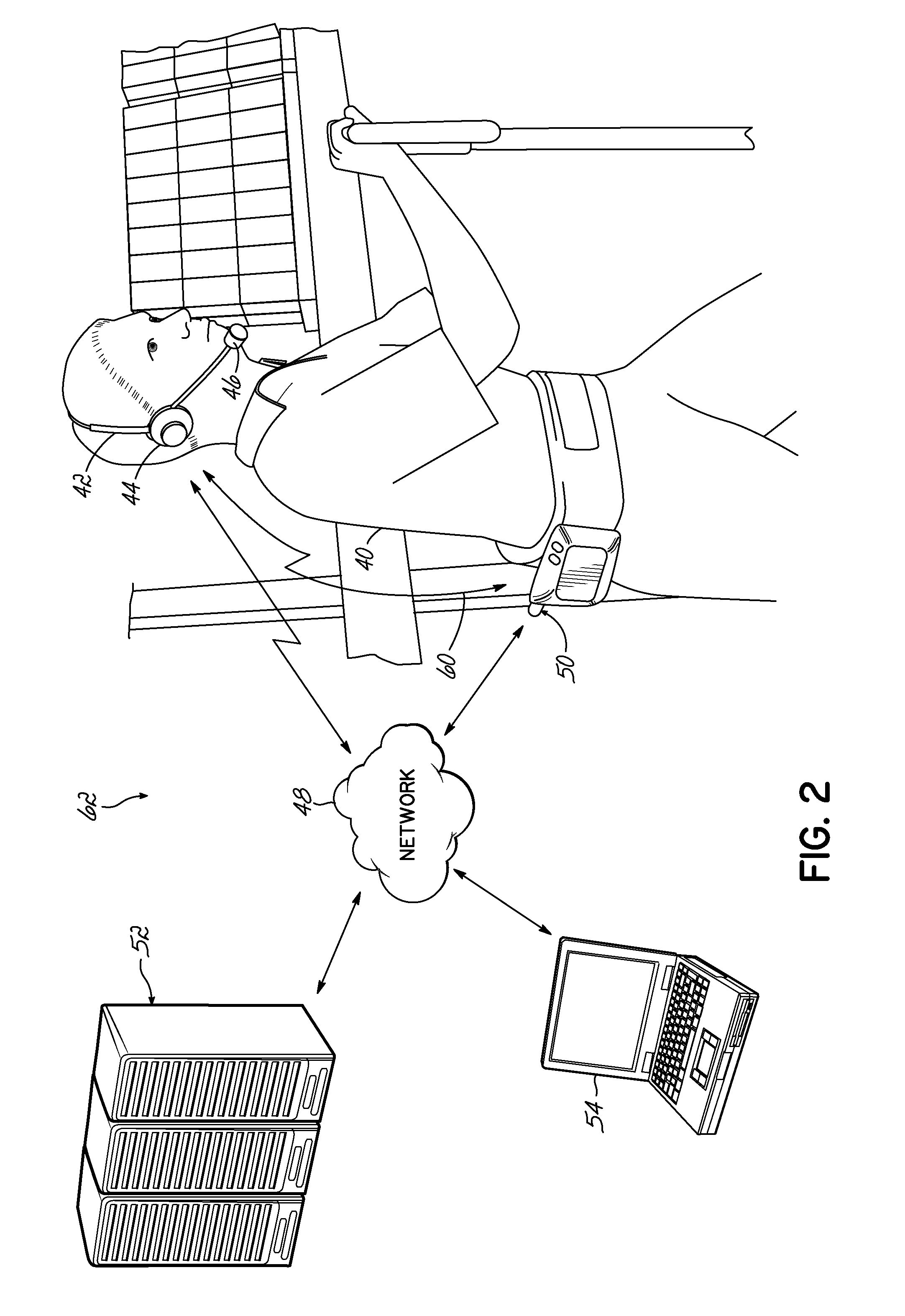Method and system for mitigating delay in receiving audio stream during production of sound from audio stream
a technology for receiving audio and producing sound, applied in the field of sound, can solve the problems of delay in the production of sound for the user, unintelligible or inaccurate sound being produced for the user of the communication component, and choppy sound production for the user, and achieve the effect of mitigating the effect of delay in receiving and/or processing audio waveforms on the quality of production
- Summary
- Abstract
- Description
- Claims
- Application Information
AI Technical Summary
Benefits of technology
Problems solved by technology
Method used
Image
Examples
Embodiment Construction
[0036]Embodiments of the invention include systems and methods directed towards improving the intelligibility and clarity of production of sound in communication systems having communication components receiving audio from a communication network and producing sound based on the received audio. More specifically, embodiments of the invention mitigate the effects of delay in receiving and processing audio waveforms by modifying production.
[0037]In work environments, a worker may receive an audio stream using a worker communication component connected to a communication network. The audio stream may typically include an audio waveform, where the audio waveform provides audio or speech instructions corresponding to tasks the worker is supposed to perform. Generally, the worker communication component then produces sound based on the audio waveform for the worker using audio production circuitry, such as a speaker, and processing circuitry drives the audio production circuitry to produc...
PUM
 Login to View More
Login to View More Abstract
Description
Claims
Application Information
 Login to View More
Login to View More - R&D
- Intellectual Property
- Life Sciences
- Materials
- Tech Scout
- Unparalleled Data Quality
- Higher Quality Content
- 60% Fewer Hallucinations
Browse by: Latest US Patents, China's latest patents, Technical Efficacy Thesaurus, Application Domain, Technology Topic, Popular Technical Reports.
© 2025 PatSnap. All rights reserved.Legal|Privacy policy|Modern Slavery Act Transparency Statement|Sitemap|About US| Contact US: help@patsnap.com



